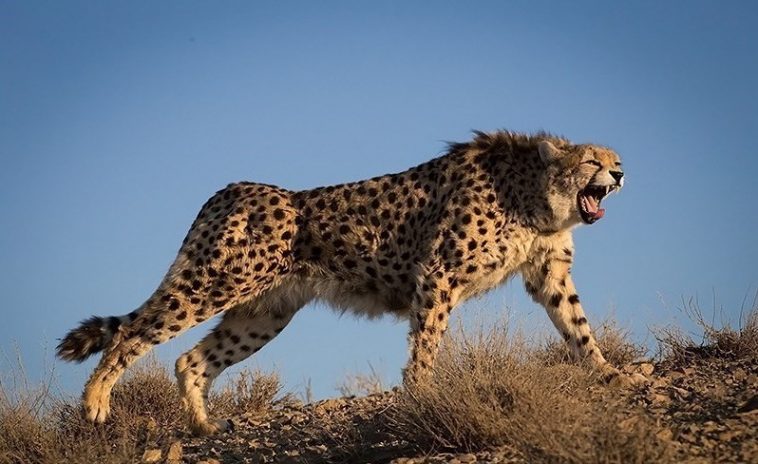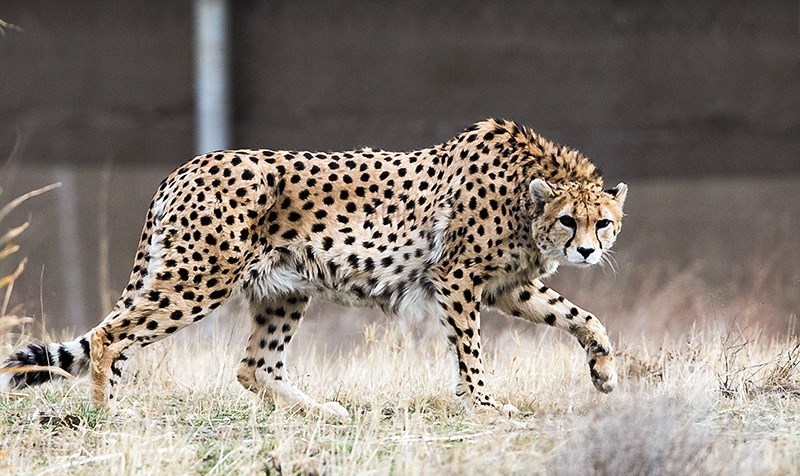One of the most endangered big cat subspecies on the planet, the Asiatic cheetah originally roamed wide regions from India to the Middle East. However, only 40 are thought to still exist today.

The stunning cheetahs now exist only in remote areas of Iran; the rest have been wiped out by relentless hunting, loss of habitat, and a shortage of prey species, most of which have been overhunted by humans. A border fence blocking natural migration patterns between Iran and Turkmenistan didn’t help, either.
Even worse, some individuals have been forced to remain in heavily populated areas due to prey availability, making them vulnerable to poaching and vehicle collisions. Others are pushed out by herders wanting to protect their livestock. It was reported that one herder went as far as pursuing a mother and her cubs on his motorbike until one cub collapsed — he then took it home and kept it chained until officers rescued it two weeks later. Other herders hunt cheetahs for sport.

Conservationists have been working to protect the subspecies, but it’s been an uphill battle; in 2018, eight conservationists working with camera traps in the region were detained for being “spies” and given 10-year prison sentences.
Despite setbacks, scientists with Panthera, the Wildlife Conservation Society, and the United Nations Development Programme are continuing their work to save the species by protecting their prey and natural habitat, and working alongside locals to identify practical ways to coexist.

Can you tell the difference between an African and Asiatic cheetah?
Genetic studies found that African and Asiatic cheetah populations separated between 32,000 and 67,000 years ago, and are genetically distinct. While Asiatic cheetahs look almost identical to their African cousins, there are some differences you might be able to decipher: Asiatic cheetahs are smaller in comparison and have a shorter, thinner winter coat. You’ll also notice an absence of a mane in the summer coat.

Source: https://roaring.earth







